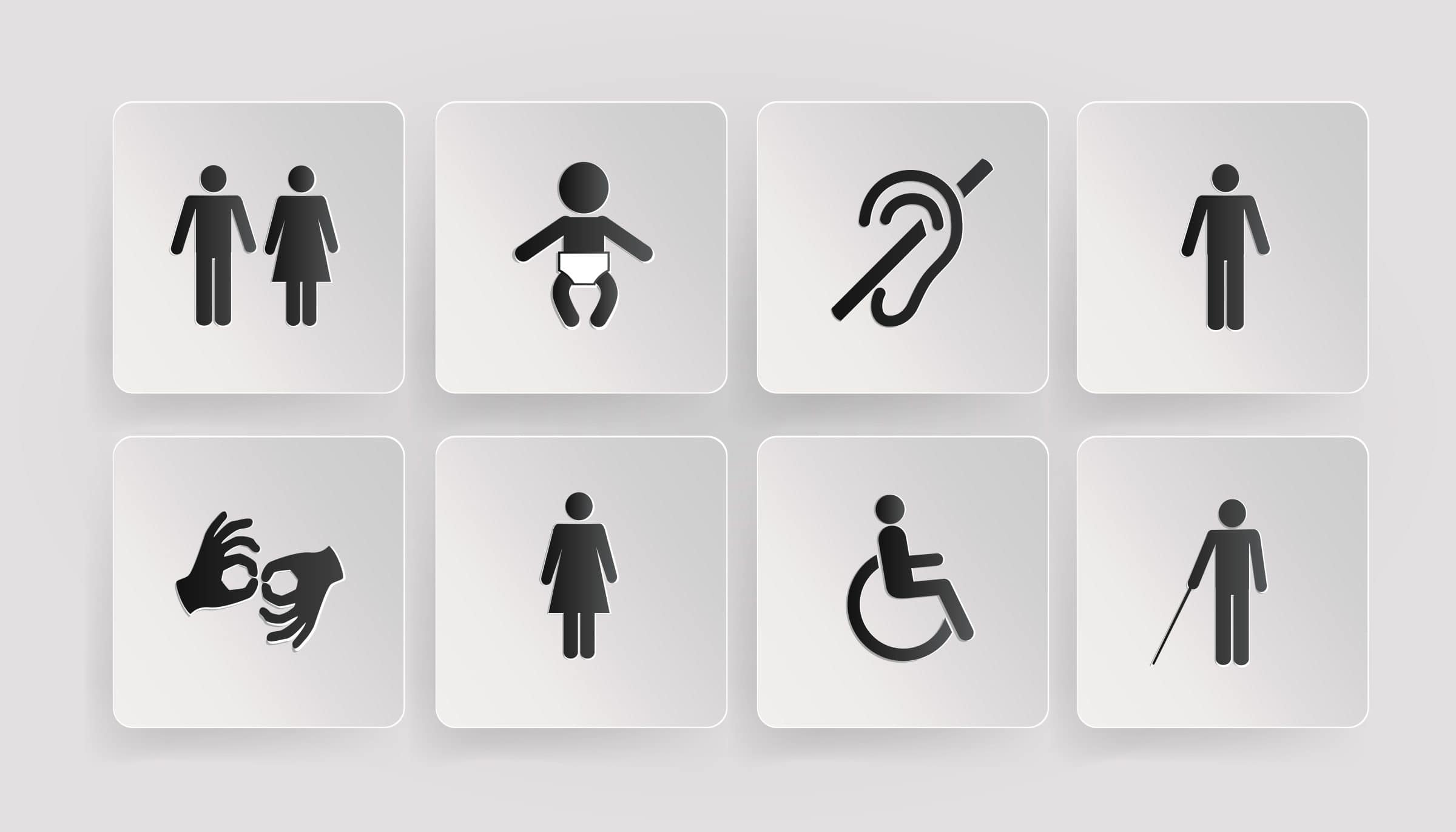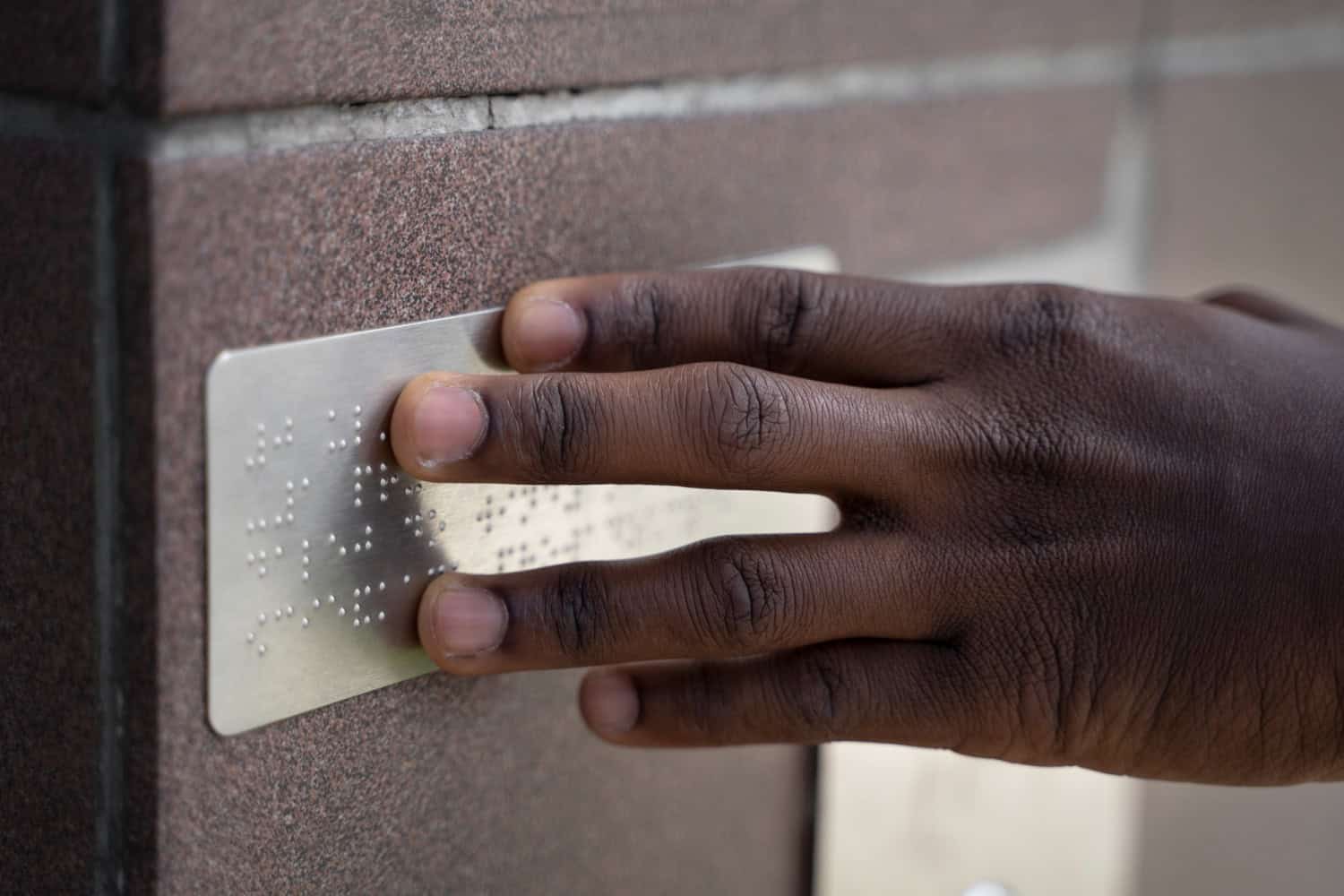Is your rental property ADA-compliant? Would you like simple solutions to align your building with changing ADA regulations?
Following ADA apartment requirements keeps you from incurring huge fines and makes your residential property available to a large pool of new renters. Compliance doesn’t have to be complicated. Let’s start by talking about what ADA apartment requirements entail, and we’ll give you tips on how you can be an ADA-compliant landlord.
What are ADA Apartment Requirements for Landlords?
The Americans with Disabilities Act, enacted in 1990, protects disabled individuals from discrimination. It is the most extensive set of disability laws in the country, assuring rights and reasonable accommodations for those with legally defined disabilities so that they may work, live, and be a part of all areas of American communities.
There are five parts to the ADA:
- Title I: Employment
- Title II: Public Services
- Title III: Public Accommodations
- Title IV: Telecommunications
- Title V: Miscellaneous
Public accommodations refer to any business that deals with the public, like restaurants, commercial leases, and retail stores. It also refers to public and common areas, leasing offices, and websites of residential rentals, such as apartments, townhouses, duplexes, condominiums, nursing homes, and any building or space that is accessible to the public.
Title III of the ADA specifically deals with multifamily residential rental properties and the requirements that need to be met to ensure individuals with disabilities have equal access to public spaces.
ADA apartment requirements don’t apply to individual housing units. Besides the ADA, other federal disability laws include:
- The Fair Housing Act of 1968 (FHA)
- The Rehabilitation Act of 1973, section 504
- The Fair Housing Amendments Act of 1988 (FHAA)
- Architectural Barriers Act (ABA)
There can also be state and local laws. For example, Wisconsin’s Fair Housing Law adds protected statuses not covered by federal laws, such as sexual orientation and source of income SOI). No federal laws prohibit SOI discrimination, but most states are adding SOI as a protected class.
U.S. Department of Housing and Urban Development lists all federal fair housing laws.
What Does ADA Mean By “Accessible?

“Accessible” can be defined as any public space or utility, inside and outside a multifamily dwelling, that is “easy to approach, enter, operate, participate in, and/or use safely and with dignity by a person with a disability.” (DC.gov, Office of Disability Rights)
Accessibility features include wheelchair ramps, elevator voice announcements, and reachable mailboxes.
What is Considered a Public Space?
Public space is generally defined as any space where people have a right of way or mostly unrestricted access. In an apartment, public spaces might include:
- Parking lots
- Entries and exits
- Hallways
- Elevators
- Mailbox rows
- Lobbies
- Laundry rooms
- Basements
- Building amenities like pools or tennis courts
- Water fountains
Why is ADA Compliance Important?
ADA landlord compliance is essential for four reasons:
- It allows disabled individuals fair, equal access to housing and public areas.
- It makes your business look good and keeps you from getting bad reviews.
- The fines for non-compliance are severe.
- Non-compliance opens the door for lawsuits.
Consider your bottom line as well. Removing barriers that prevent people with disabilities from renting in your building can be profitable. A quarter of the American adult population lives with some form of disability—that’s over 61 million people with an estimated $645 billion in annual disposable income. That’s a large market segment to ignore if you’re trying to reduce vacancies in your rental complexes. What Are Reasonable Accommodations in Apartments?

The U.S. Department of Housing and Urban Development’s (HUD’s) definition of ‘reasonable accommodation’ is “… a change, exception, or adjustment to a rule, policy, practice, or service that may be necessary for a person with disabilities to have an equal opportunity to use and enjoy a dwelling, including public and common use spaces, or to fulfill their program obligations.”
In the language of the ADA, reasonable accommodations are also called “reasonable modifications.” These rules apply to any disability-related need, whether a physical issue or a mental illness.
The law requires landlords to make, or allow the tenant to make, “reasonable” accommodations—if these accommodations or modifications can be made without undue burden to landlords or other residents.
Examples of Reasonable Accommodations
- Allowing a disabled tenant to have service animals or emotional support animals despite a ‘no pets’ rule.
- Providing handicapped parking spots or giving a disabled renter a closer parking space.
- Placing a tenant with a mobility impairment in a ground-floor unit.
- Adding grab bars in bathrooms.
- Changing the rent due date to accommodate the renter’s income assistance payments.
- Allowing live-in home health aides.
As a housing provider, you can refuse requests for reasonable accommodations if:
- The modification will cause you undue financial hardship.
- The proposal is not made by or on behalf of a disabled renter.
- The request is not related to the renter’s disability.
Since reasonable accommodations are a shared responsibility between the tenant and the landlord, you can allow a tenant to modify their unit at their own expense, aside from what you are required to do by law.
You may also ask for proof of disability and the reason for the accommodation, and you can evaluate them on a case-by-case basis.
Who Pays for ADA Reasonable Accommodations?
Most often, landlords are financially responsible for making any modifications for disabled renters, especially outside and inside common spaces, as required for ADA compliance. For example, the property owner would pay for the addition of handicapped-accessible parking spaces, lowered door peepholes, and proper hallway lighting.
Tenants are usually financially responsible for modifications to the inside of the rental unit. At the end of their lease, a landlord can request a tenant restore the unit to its original condition for the next prospective tenant.
5 Tips for Landlords to Meet ADA Apartment Requirements
There is a lot a landlord needs to know to meet all federal ADA apartment requirements for fair housing. These tips can help you make affordable modifications, stay compliant, create a sense of inclusion and community, and give you access to a new market of renters.
1. Make Small Changes with Big Results

Modifying your rental property may seem overwhelming, but you can make small, impactful changes without breaking the bank. Some examples of more manageable, cheaper adaptations you can implement are:
- Update signs and mailboxes. Physical disabilities don’t always involve mobility issues. Blind and deaf individuals fall under the protection of the ADA, too. Add braille and larger print to your signage. Make sure you have large print rental agreements and other paperwork. You can also create audio recordings of all paperwork and notices available to those with limited vision.
- Change the alarms. Outfit units and public spaces with visual and audible fire alarms and carbon monoxide alerts.
- Create accessible rent payment protocols. For example, allow individuals with mobility issues to have their rent check picked up, dropped off in a rental office, or mailed to you.
- Change the public space doorknobs. This is a simple, easy change that makes a big difference. Lever handles on doors provide easier access than round doorknobs.
2. Know Your Trip Hazards
As defined by the ADA, a trip hazard is a shift in any floor level over ¼ of an inch. This applies to surfaces inside and outside of your building. Trip hazards in common-use areas are especially dangerous for people with disabilities and older adults. Uneven public sidewalks and private pavements are the most common trip hazards and must be fixed to be ADA-compliant.
Other trip hazards include:
- Improper lighting
- Obstructed walkways
- Pulled-up and worn carpets
- Wet surfaces
- Broken tiles or laminates
- Open bottom drawers
- Uneven stairs
- Uncovered cables
Many consultant companies are available to do ADA compliance trip hazard surveys and make repairs to help apartment owners meet ADA apartment requirements.
3. Understand Website Compliance
Virtual leasing is becoming the new normal. Although there are some gray areas, your property management business website must be accessible to disabled individuals under Title III of the ADA. Your website needs to be coded correctly for screen readers, images need alt-tag descriptive text, and color codes can’t be solely relied on to provide specific information and much more. As a bonus, if your website is ADA-compliant, you can attract more renters.
Increasing website and app accessibility is currently a hot topic for federal lawmakers, including new rules proposed in 2023 to make websites more accessible.4. Double-Check Your Ramps

Wheelchair access is usually the first thing people think of when addressing accessibility. There are an estimated 3.3 million wheelchair or power chair users in the United States, which is why wheelchair ramps and mobility-friendly pathways are essential.
Some requirements and modifications you can make to meet ADA apartment requirements are:
- Install curb ramps and regular ramps. The ADA requires curb and standard ramps for height over ½ inch.
- Install railings on the ramps and stairs. Some people have mobility problems that don’t require a wheelchair but may require the help and stability railings provide.
- Add tactical raised domes. Also called truncated domes, these early warning systems are mandatory at public transportation’s top and bottom steps but optional for property owners. If financially viable, adding them to your outside stairs or pavements will benefit your renters and your business.
5. Get Help and Verify Compliance
Landlords must understand and follow state and federal laws concerning fair housing for disabled renters. Once you are familiar with the regulations, assess your property for non-compliance issues inside and outside.
Getting professional help from a lawyer or an ADA compliance agency is always a good idea to ensure that your rental properties are legal. Some laws and codes may apply to your building based on the year it was built, and new buildings require more disability-friendly plans from the start.
You can find more information on landlord ADA compliance at the United States Access Board.
The ADA and Property Managers
ADA compliance isn’t complicated, and many federal and state agencies and private consulting companies are willing to help address specific requirements. To summarize:
- Do rental properties have to meet ADA requirements? Yes, in public areas.
- Who is responsible for ADA compliance? The landlord and the tenant are responsible for the inside of the dwelling unit, but only the landlord is responsible for the building’s public areas.
- Do landlords have to comply with the ADA? Yes, and the more prepared you are to remove barriers to disabled renters, the more potential for new tenants.
- Is ADA compliance all I need to care about? No. Laws outside the ADA have additional requirements for public housing, college dorms, and individual rentals.
Meeting ADA apartment requirements as a landlord or property manager keeps you from breaking the law and paying hefty fines, shines a positive light on your management company, and allows you to source new renters. Always research what regulations apply to your building and situation, and check for ways to stay ADA compliant.